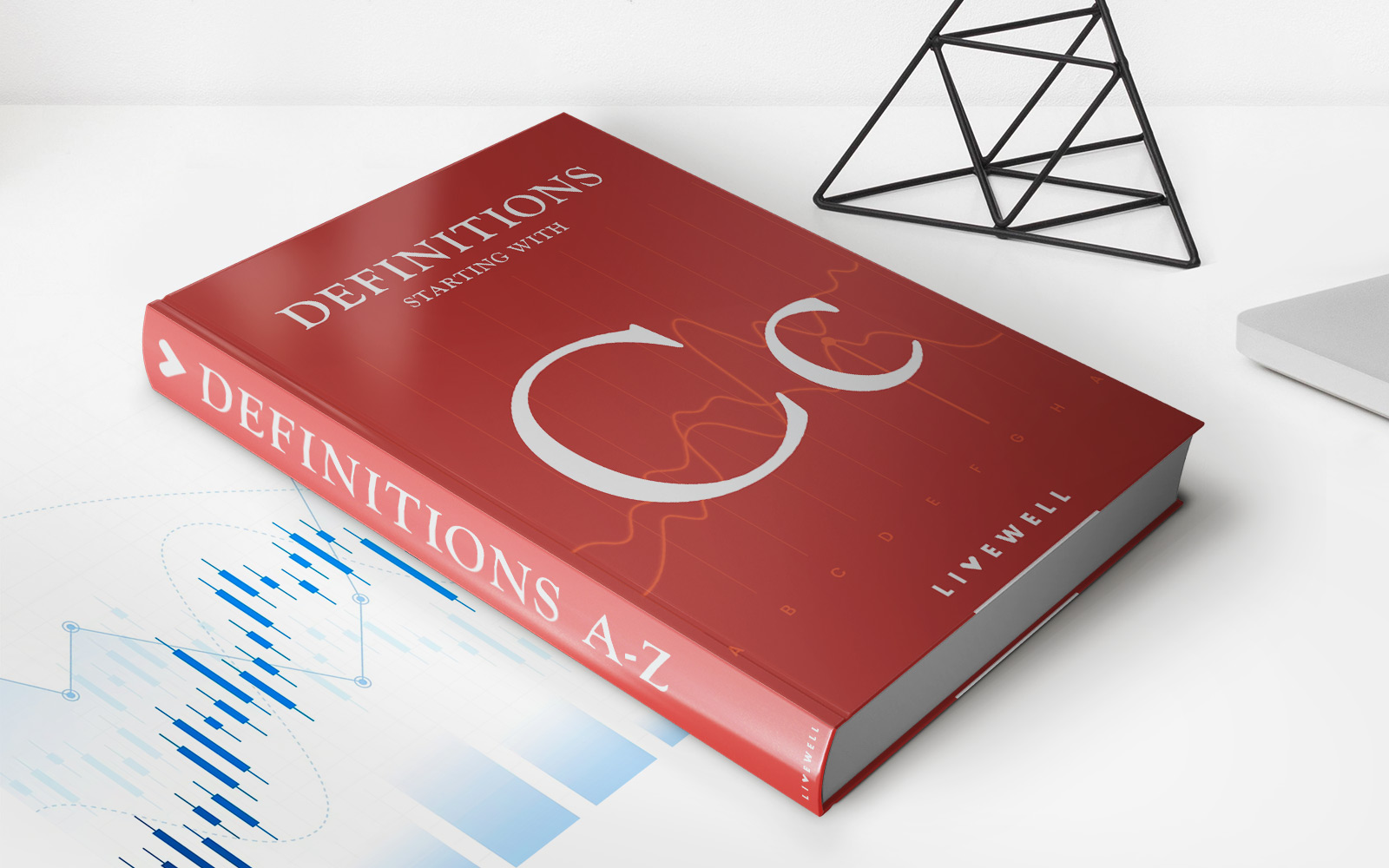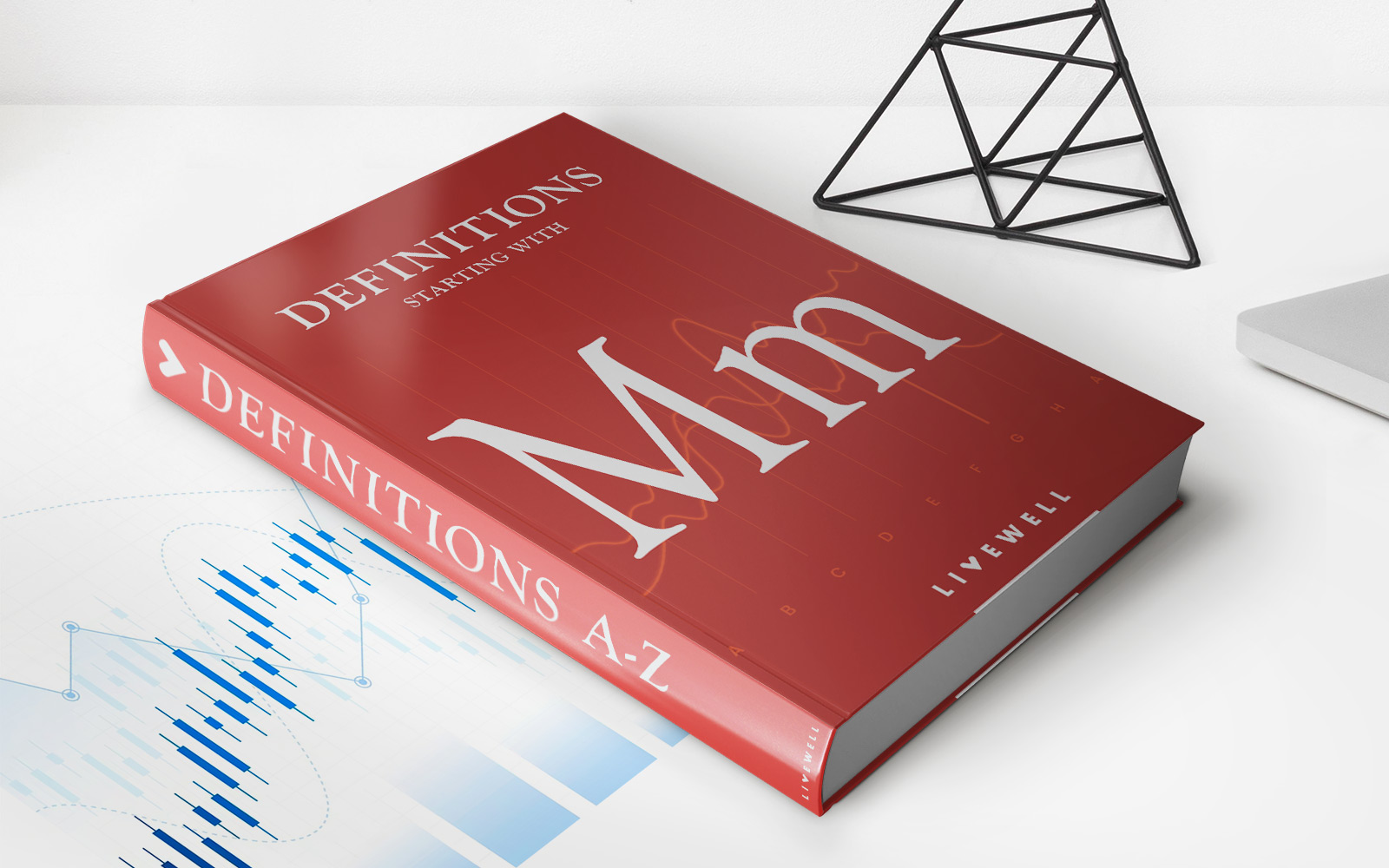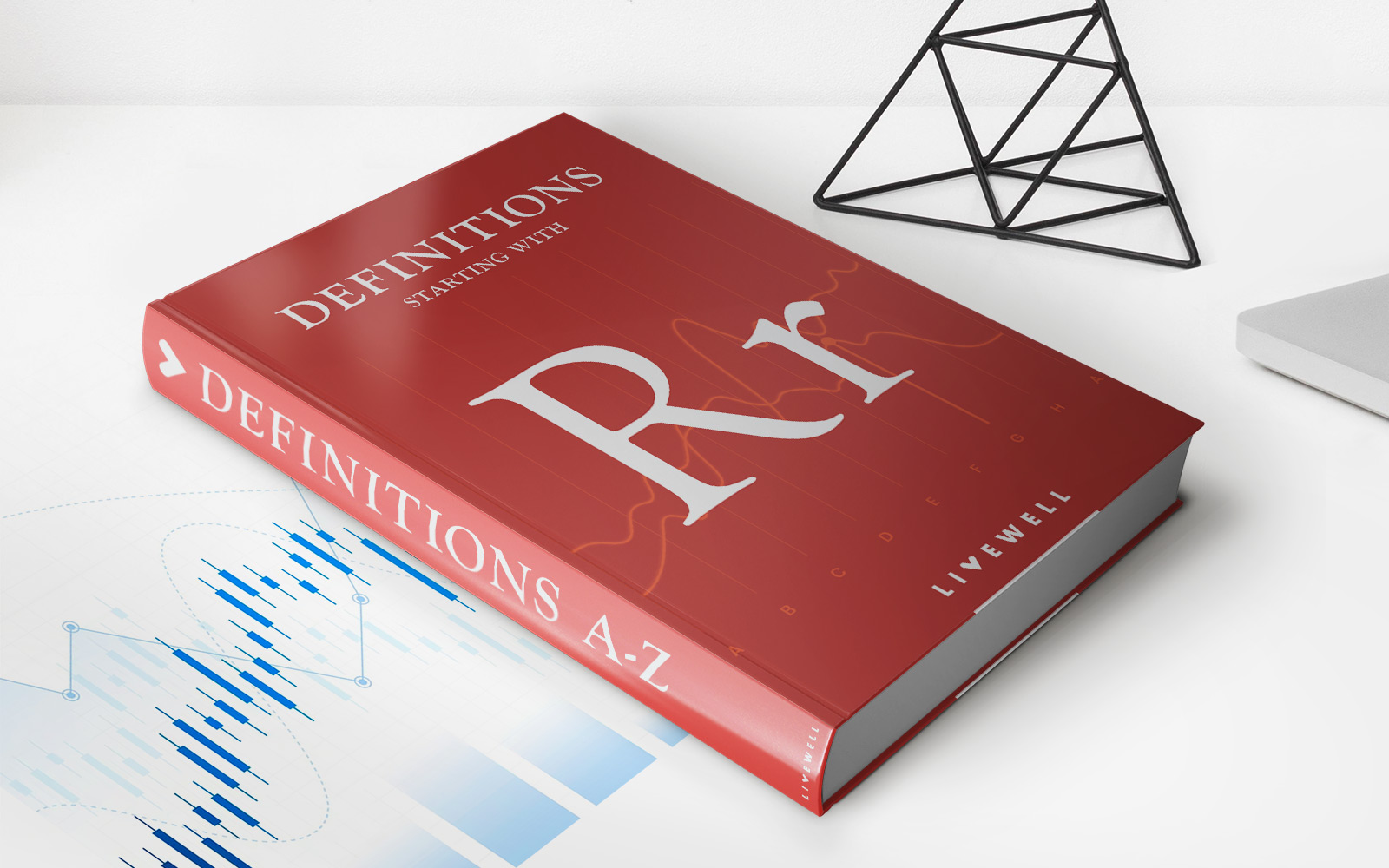Home>Finance>Which Terms Apply To Fixed Unit Investment Trusts?


Finance
Which Terms Apply To Fixed Unit Investment Trusts?
Modified: February 21, 2024
Learn about the key finance terms that apply to fixed unit investment trusts. Understand the concepts and principles to make informed investment decisions.
(Many of the links in this article redirect to a specific reviewed product. Your purchase of these products through affiliate links helps to generate commission for LiveWell, at no extra cost. Learn more)
Table of Contents
- Introduction
- What is a Fixed Unit Investment Trust?
- Characteristics of Fixed Unit Investment Trusts
- Types of Fixed Unit Investment Trusts
- Advantages of Investing in Fixed Unit Investment Trusts
- Disadvantages of Investing in Fixed Unit Investment Trusts
- Comparison with Other Investment Vehicles
- How to Invest in a Fixed Unit Investment Trust
- Risks Associated with Fixed Unit Investment Trusts
- Conclusion
Introduction
A Fixed Unit Investment Trust (UIT) is a type of investment vehicle that provides individuals with the opportunity to invest in a diversified portfolio of securities. UITs are similar to mutual funds and exchange-traded funds (ETFs) in that they pool together money from multiple investors to invest in a specific set of securities. However, there are certain characteristics and features that make UITs unique.
UITs are structured as a fixed portfolio of securities that are held until the trust terminates, which is typically between 12 to 15 months. Unlike mutual funds and ETFs, which are managed by investment professionals and have the flexibility to buy and sell securities, UITs do not engage in active trading. This passive approach is appealing to some investors who prefer a buy-and-hold strategy.
UITs are typically created around a specific investment objective or theme, such as a bond portfolio, a collection of dividend-paying stocks, or a portfolio focused on a specific sector or industry. This allows investors to choose UITs that align with their investment goals and risk tolerance.
UITs are also distinguished by their structure. They are created as a fixed number of units, hence the name “Fixed Unit Investment Trust.” These units are sold to investors at the initial offering price and represent a proportional ownership interest in the trust. The value of the UIT units is determined by the value of the underlying securities held in the trust.
Investing in a UIT offers several advantages. First, UITs provide diversification by allowing investors to gain exposure to a portfolio of securities without having to purchase each individual security themselves. Second, UITs have a predetermined investment strategy, making it easier for investors to understand the objectives and risks associated with the trust. Lastly, UITs typically have lower expense ratios compared to actively managed funds, which can result in higher returns for investors.
While UITs have their advantages, they also have some drawbacks. As mentioned earlier, UITs do not engage in active trading, which means they do not adjust their holdings based on market conditions. This lack of flexibility may limit the trust’s ability to capitalize on investment opportunities or mitigate potential losses. Additionally, UITs have a predefined termination date, which may not align with an investor’s long-term investment goals.
In this article, we will delve deeper into the characteristics of Fixed Unit Investment Trusts, discuss the different types available, and explore the advantages and disadvantages of investing in UITs. We will also compare UITs with other investment vehicles, provide insights on how to invest in a UIT, and highlight the risks associated with these trusts. Let’s dive in!
What is a Fixed Unit Investment Trust?
A Fixed Unit Investment Trust (UIT) is a type of investment vehicle that pools together money from multiple investors to create a diversified portfolio of securities. Unlike mutual funds and exchange-traded funds (ETFs) that are actively managed, UITs operate on a passive investment strategy.
UITs are created with a fixed number of units, and investors purchase these units at the initial offering price. Each unit represents a proportional ownership interest in the trust and reflects the underlying securities held in the portfolio. The value of the UIT units is determined by the performance of the securities held by the trust.
UITs are typically designed around a specific investment objective or theme. For example, a UIT might focus on investing in a portfolio of bonds, stocks, or a combination of both. This allows investors to choose a UIT that aligns with their investment goals and risk tolerance.
One key characteristic of UITs is that they have a predefined termination date. The trust will liquidate and distribute the proceeds to unit holders when it reaches its maturity date, which is usually between 12 to 15 months. This feature distinguishes UITs from other investment vehicles, such as mutual funds and ETFs, which do not have a predetermined termination date.
UITs are considered a passive investment vehicle because they are not actively managed by investment professionals. The trust’s holdings remain fixed until the maturity date, and there is minimal trading activity within the portfolio. This buy-and-hold approach can offer advantages for investors who prefer a set-it-and-forget-it investment strategy.
UITs provide investors with diversification benefits. By pooling money from multiple investors, UITs can invest in a wide range of securities across different asset classes. This diversification helps to spread out the investment risk and can potentially enhance returns.
UITs also have a clear and transparent investment strategy. Since the trust’s holdings remain fixed, investors can easily evaluate the portfolio’s objectives and understand the risks associated with the investment. This clarity can be appealing to investors who prefer transparency and a straightforward approach to investing.
It is important to note that while UITs are marketed as a long-term investment option, investors can sell their UIT units on the secondary market before the maturity date. However, the secondary market may have limited liquidity, and selling units before maturity may result in a loss if the price of the units is below the initial offering price.
In summary, a Fixed Unit Investment Trust is an investment vehicle that allows investors to buy units representing ownership in a diversified portfolio of securities. UITs operate on a passive investment strategy and have a predetermined termination date. They provide investors with diversification and transparency in their investment strategy.
Characteristics of Fixed Unit Investment Trusts
Fixed Unit Investment Trusts (UITs) have distinct characteristics that set them apart from other investment vehicles. Understanding these characteristics can help investors determine if UITs align with their investment objectives and risk tolerance.
1. Fixed Portfolio: One of the primary features of UITs is that they have a fixed portfolio of securities. Unlike mutual funds or ETFs that engage in active trading, UITs do not make changes to their holdings throughout the life of the trust. The securities held within the UIT portfolio are determined at the trust’s inception and remain constant until its termination date.
2. Passive Management: UITs are passively managed, meaning there is no active decision-making by fund managers to buy or sell securities within the portfolio. The trust’s investment strategy is laid out at the creation of the UIT and is executed accordingly. This appeals to investors who prefer a hands-off approach to investing and do not want to constantly monitor and adjust their holdings.
3. Predetermined Termination Date: Each UIT has a predetermined termination date at which the trust is dissolved, and the proceeds are distributed to unit holders. This termination date is established at the inception of the UIT and is typically set between 12 to 15 months. This feature differentiates UITs from other investment vehicles that do not have a fixed maturity date.
4. Unique Investment Themes: UITs are often designed around specific investment themes or objectives, such as a particular sector, geographic region, or asset class. For example, an investor may find UITs focused on technology stocks, municipal bonds, or international equities. This allows investors to select a UIT that aligns with their investment goals and beliefs.
5. Fixed Number of Units: UITs are initially offered at a fixed number of units, and investors purchase these units at the offering price. The value of each unit is determined by the net asset value (NAV) of the trust’s holdings divided by the number of units outstanding. As units are purchased or sold, the total number of units remains fixed.
6. Diversification: UITs aim to provide investors with diversification by holding a basket of securities. Investing in a UIT allows individuals to access a diversified portfolio without the need to individually purchase and manage each security. Diversification helps to spread risk and potentially mitigate the impact of any single security’s performance on the overall investment.
7. Lower Expense Ratios: UITs often have lower expense ratios compared to actively managed funds. This is because UITs do not require ongoing portfolio management or research. As a result, investors may benefit from reduced costs, which can have a positive impact on their investment returns.
Understanding these characteristics will assist investors in evaluating whether UITs fit their investment goals and preferences. It is essential to carefully review the investment objectives, risks, and fees associated with any UIT before considering an investment.
Types of Fixed Unit Investment Trusts
Fixed Unit Investment Trusts (UITs) are available in a variety of types and investment themes to cater to the diverse needs and preferences of investors. Each type of UIT focuses on a specific asset class, sector, or investment strategy. Here are some common types of UITs:
- Bond UITs: Bond UITs invest in a diversified portfolio of bonds. The portfolio may include government bonds, corporate bonds, municipal bonds, or a combination of different fixed-income securities. Bond UITs can offer investors regular income through interest payments and the potential for capital appreciation.
- Equity UITs: Equity UITs invest in a portfolio of stocks. These UITs can be broad-based, focusing on a specific market index like the S&P 500, or they can be sector-specific, targeting a particular industry such as technology, healthcare, or energy. Equity UITs offer investors the opportunity to participate in the potential growth of specific markets or sectors.
- International UITs: International UITs invest in securities listed on international exchanges. These UITs provide exposure to foreign markets and allow investors to diversify their portfolios by investing in companies outside their home country. International UITs can target specific regions or countries, providing investors with exposure to the global economy.
- Sector UITs: Sector UITs focus on a specific sector or industry. Examples include technology, healthcare, energy, financial services, and consumer discretionary. Sector UITs provide investors with targeted exposure to industries they believe have the potential for growth or specific investment opportunities.
- Socially Responsible Investing (SRI) UITs: SRI UITs invest in companies that meet specific environmental, social, and governance (ESG) criteria. These UITs allow investors to align their investments with their values, supporting companies with positive social and environmental practices while aiming for financial returns.
- Fixed Income UITs: Fixed income UITs focus on income-generating securities such as bonds, preferred stocks, or other debt instruments. These UITs can have a specific maturity date or target a particular duration. Fixed income UITs typically aim to provide investors with regular interest payments and preservation of capital.
It is important for investors to carefully review the investment objectives and holdings of each UIT type to ensure it aligns with their investment goals and risk tolerance. Additionally, investors should consider the potential risks and historical performance of the specific type of UIT before making any investment decisions.
UITs provide investors with the flexibility to choose a type that suits their investment preferences. By diversifying into different types of UITs, investors can potentially enhance their overall portfolio performance and manage risk more effectively.
Advantages of Investing in Fixed Unit Investment Trusts
Fixed Unit Investment Trusts (UITs) offer several advantages that make them an attractive investment option for individuals seeking diversification and a passive investment approach. Here are some key advantages of investing in UITs:
- Diversification: UITs provide investors with instant diversification. By investing in a UIT, individuals gain exposure to a portfolio of securities without having to buy each security individually. This diversification helps spread risk and can potentially enhance returns by reducing the impact of fluctuations in any single security.
- Transparency: UITs have a clear and transparent investment strategy. The trust’s holdings and objectives are laid out clearly from the start, allowing investors to understand the underlying securities and the associated risks. This transparency is essential for investors who value a straightforward and easily comprehensible investment approach.
- Lower Expense Ratios: UITs generally have lower expense ratios compared to actively managed funds. Since UITs operate on a passive investment strategy, they require less ongoing management and research. Lower expenses can result in higher returns for investors over the long term.
- Targeted Investment Themes: UITs are often designed around specific investment themes or objectives. Investors have the opportunity to choose UITs that align with their investment goals and beliefs. Whether it’s investing in a specific sector, asset class, or socially responsible investing (SRI), UITs allow investors to focus their investments on areas of interest or potential growth.
- Stability: UITs may provide stability due to their buy-and-hold investment approach. Unlike actively managed funds that regularly buy and sell securities, UITs do not engage in active trading. This can help mitigate the impact of short-term market fluctuations, providing investors with a more stable investment experience.
- Predictable Income: Some UITs, such as bond or income-focused UITs, offer predictable income streams through regular interest payments. This can be particularly appealing to investors seeking consistent cash flow or retirees who rely on investment income to support their lifestyle.
- Accessibility: UITs are accessible to a wide range of investors. They can be purchased through various brokerage platforms or financial institutions. This accessibility allows individuals with different levels of investment capital to participate in UITs and potentially benefit from their advantages.
It’s essential to consider these advantages in the context of your investment goals, risk tolerance, and investment time horizon. While UITs offer many benefits, it’s crucial to understand the potential risks and consult with a financial advisor before making any investment decisions.
By carefully selecting UITs that align with your investment objectives and combining them with other investment vehicles, you can create a diversified portfolio that aims to achieve your financial goals.
Disadvantages of Investing in Fixed Unit Investment Trusts
While Fixed Unit Investment Trusts (UITs) offer several advantages, it’s important to consider the potential disadvantages before investing. Here are some drawbacks to keep in mind:
- Limited Flexibility: One major disadvantage of UITs is their lack of flexibility. Once the portfolio is established, the securities held within the trust remain fixed until the UIT’s termination date. This means the trust does not have the ability to react to changing market conditions or take advantage of new investment opportunities that may arise.
- Specific Termination Date: UITs have a predefined termination date, typically between 12 to 15 months. This may not align with an investor’s long-term investment goals. If an investor wants to hold onto their investment beyond the UIT’s termination date, they will need to consider reinvesting in another UIT or transitioning their investment into a different investment vehicle, which may incur costs or transaction fees.
- Secondary Market Liquidity: While UIT units are redeemable, the secondary market for UIT units may have limited liquidity. If an investor needs to sell their units before the termination date, they may find it challenging to find buyers and may need to sell at a discount to the underlying value of the securities held within the trust.
- Lack of Active Management: UITs operate on a passive investment strategy. This means they do not have a professional investment manager actively monitoring and adjusting the portfolio. While this passive approach may appeal to certain investors, it does mean that the trust may not take advantage of potential market opportunities or make timely adjustments to mitigate losses during market downturns.
- Potential Overlapping Fees: Investors may incur overlapping fees when investing in UITs that hold underlying mutual funds or ETFs. This is because both the UIT and the underlying funds charge management fees, which can result in higher overall expenses for investors. It’s important to consider these fees and assess the overall cost-effectiveness of the investment.
- Dependency on Underlying Securities: The performance of UITs is directly tied to the performance of the underlying securities held within the trust. If any of the securities experience a decline in value, it can impact the overall performance of the UIT. Investors should carefully review the holdings and the associated risks to assess the potential downside of investing in a specific UIT.
Understanding these disadvantages is essential in evaluating whether UITs fit your investment goals and risk tolerance. It’s recommended to carefully review the prospectus and consult with a financial advisor before making any investment decisions. Additionally, diversifying your investment portfolio with a range of different investment vehicles can help mitigate some of the limitations associated with UITs.
By considering the potential drawbacks alongside the advantages, you can make an informed decision about whether investing in UITs aligns with your overall investment strategy.
Comparison with Other Investment Vehicles
When it comes to investing, there are various types of investment vehicles available, each with its own set of characteristics and advantages. Let’s compare Fixed Unit Investment Trusts (UITs) with mutual funds and exchange-traded funds (ETFs) to understand how they differ:
Mutual Funds: Mutual funds are actively managed investment vehicles, meaning a professional fund manager makes decisions on which securities to buy and sell within the fund. Unlike UITs, mutual funds have no fixed portfolio and can adjust their holdings on an ongoing basis. This flexibility allows mutual funds to respond to market conditions and investment opportunities. However, active management typically results in higher expense ratios for mutual funds compared to UITs. Mutual funds are also commonly sold at the net asset value at the end of each trading day.
Exchange-Traded Funds (ETFs): ETFs are similar to mutual funds as they pool together money from multiple investors to invest in a diversified portfolio of securities. However, ETFs are traded on stock exchanges and can be bought and sold throughout the trading day at market prices. Unlike UITs and many mutual funds, ETFs are not actively managed. Instead, they typically aim to replicate the performance of a specific index or asset class. This passive management approach often results in lower expense ratios compared to actively managed mutual funds. ETFs also offer greater liquidity and intraday trading flexibility.
When comparing these investment vehicles, some key points to consider include:
- Management Strategy: UITs operate on a passive investment strategy, while mutual funds are actively managed. ETFs can be either actively or passively managed.
- Flexibility: UITs have a fixed portfolio and lack the flexibility to adjust holdings, while mutual funds and some ETFs can actively buy and sell securities based on market conditions.
- Expense Ratios: UITs generally have lower expense ratios compared to actively managed mutual funds, but they may have higher expense ratios than passively managed ETFs.
- Trading: UITs are typically bought at the initial offering and sold in the secondary market, while mutual funds and ETFs are priced based on their net asset value (NAV) and can be bought and sold throughout the trading day.
- Liquidity: ETFs generally offer greater liquidity and intraday trading flexibility compared to UITs and some mutual funds.
- Transparency: UITs and ETFs have clear, transparent investment strategies and portfolios, while actively managed mutual funds may have a higher level of discretion in their holdings.
Ultimately, the choice between UITs, mutual funds, and ETFs depends on an investor’s specific goals, risk tolerance, and preferences. Each vehicle has its own advantages and disadvantages, and it’s important to carefully consider these factors before making investment decisions. Consulting with a financial advisor can provide valuable insights and help tailor an investment strategy that aligns with individual needs.
How to Invest in a Fixed Unit Investment Trust
Investing in a Fixed Unit Investment Trust (UIT) is a straightforward process that can be done through various brokerage platforms or financial institutions. Here are the general steps to invest in a UIT:
- Educate Yourself: Start by familiarizing yourself with UITs, their characteristics, and investment strategies. Understand the risks, advantages, and potential returns associated with investing in UITs. This knowledge will help you make informed investment decisions.
- Research Available UITs: Explore the market and research the available UIT options. Consider the investment themes, asset classes, and objectives that align with your investment goals. Evaluate the underlying securities held in each UIT to ensure they meet your risk tolerance and investment preferences.
- Select a UIT: Once you have identified a UIT that suits your investment objectives, check its prospectus or offering document for detailed information. This document provides insights into the trust’s investment strategy, management team, fees, and risks. Read it thoroughly to fully understand what you are investing in.
- Contact a Brokerage or Financial Institution: Reach out to a brokerage firm or financial institution that offers UITs. Their representatives can guide you through the process, provide further information, and assist with the necessary paperwork.
- Complete the Application: Fill out the required paperwork to open an account and invest in the chosen UIT. The application typically includes personal information, investment amount, and investment account preferences. Ensure that you provide accurate and up-to-date information.
- Review and Sign: Carefully review the application and any accompanying documents. Ensure that you understand and agree to the terms and conditions outlined. Sign the necessary forms and submit them with any required supporting documentation.
- Make the Investment: Once your application is processed and approved, you will receive instructions on how to transfer funds to purchase UIT units. Follow those instructions to make the investment. The investment amount will determine the number of units you will be allocated at the UIT’s initial offering price.
- Monitor Your Investment: After investing in a UIT, monitor your investment periodically to assess its performance and ensure it aligns with your expectations. Keep track of any updates or changes related to the UIT and the underlying securities.
- Hold or Sell: UITs have a fixed investment period until the termination date. You have the option to hold onto your investment until the UIT matures and the proceeds are distributed, or you may choose to sell your units on the secondary market before the termination date. Consider your investment goals and consult with a financial advisor before making any decisions.
Remember, investing in UITs should be done in alignment with your financial goals and risk tolerance. It’s essential to understand the associated risks and consult with a financial advisor to ensure UITs fit into your overall investment strategy.
Risks Associated with Fixed Unit Investment Trusts
While Fixed Unit Investment Trusts (UITs) offer certain advantages, it is important for investors to be aware of the potential risks involved. Here are some risks associated with investing in UITs:
- Market Risk: UITs are subject to the overall market risk. If the securities held within the trust experience a decline in value, the UIT’s net asset value (NAV) will also be negatively affected. Market volatility can impact the value of UIT units, potentially resulting in losses for investors.
- Interest Rate Risk: UITs that hold fixed-income securities, such as bonds, are vulnerable to interest rate fluctuations. When interest rates rise, bond prices tend to fall, which can impact the overall performance of the UIT. This risk is particularly relevant for bond UITs, as changes in interest rates can affect the income generated by the bond holdings.
- Credit Risk: UITs that invest in fixed-income securities are exposed to credit risk. This refers to the potential for issuers of the securities to default on interest or principal payments. If the credit quality of the underlying securities deteriorates, it can negatively impact the value of the UIT and the income it generates.
- Liquidity Risk: UITs may hold securities that are illiquid or have limited trading volumes. If investors want to sell their units before the UIT’s termination date, they may face difficulty finding buyers in the secondary market. This lack of liquidity can lead to potential delays or the need to sell units at a discount to the underlying value.
- Reinvestment Risk: UITs that generate income, such as bond UITs, are subject to reinvestment risk. If interest rates decline, the income generated by the UIT may decrease when the underlying fixed-income securities mature and the proceeds are reinvested at lower rates. This can impact the overall returns of the UIT.
- Manager Risk: While UITs are passively managed, there may still be manager risk associated with the selection of the underlying securities. If the initial selection or composition of the securities within the UIT does not perform as expected, it can impact the overall performance of the trust.
- Early Termination Risk: UITs have a predefined termination date. If an investor needs to sell their units before the UIT reaches its maturity date, they may face limited liquidity in the secondary market or sell at a price below the underlying value. Additionally, premature withdrawal may result in missed potential returns if the trust performs well until maturity.
- Past Performance is Not Indicative of Future Results: UITs, like any investment, are subject to the disclaimer that past performance does not guarantee future results. The performance of a UIT may vary, and historical returns should not be considered a reliable indicator of future performance.
It is important for investors to thoroughly assess the risks associated with UITs and consider their investment objectives and risk tolerance before investing. Consulting with a financial advisor can provide valuable insights and help navigate the potential risks associated with UIT investments.
By understanding and evaluating these risks, investors can make informed decisions and potentially minimize the impact of these risks on their investment portfolios.
Conclusion
Fixed Unit Investment Trusts (UITs) offer investors the opportunity to invest in a diversified portfolio of securities with a passive investment approach. UITs provide several advantages, including instant diversification, transparency, lower expense ratios, targeted investment themes, stability, predictable income, and accessibility. However, it is important to consider the potential disadvantages and risks associated with UITs, such as limited flexibility, specific termination dates, secondary market liquidity, lack of active management, potential overlapping fees, and dependency on underlying securities.
When comparing UITs with other investment vehicles like mutual funds and exchange-traded funds (ETFs), investors should consider factors such as management strategy, flexibility, expense ratios, trading, liquidity, and transparency. Each investment vehicle has its own set of advantages and disadvantages, and the choice depends on individual goals, risk tolerance, and preferences.
Investing in UITs involves steps such as educating oneself, researching available UITs, selecting a UIT, completing the application, reviewing and signing documents, making the investment, monitoring the investment, and deciding whether to hold or sell the units. It is important to review prospectuses, consult with financial advisors, and carefully assess the risks associated with UITs before investing.
In summary, UITs can be a suitable investment option for individuals seeking diversification, transparency, and a passive investment approach. By understanding the characteristics, advantages, disadvantages, and risks of UITs, investors can make informed decisions and align their investments with their financial goals and risk tolerance.














